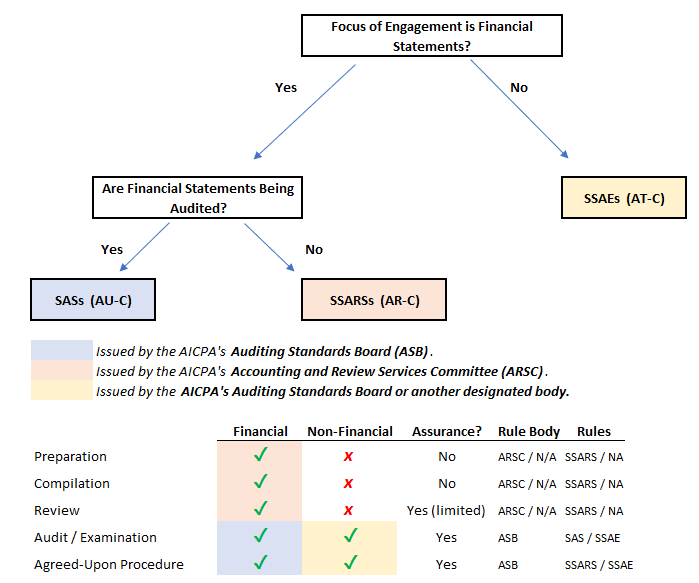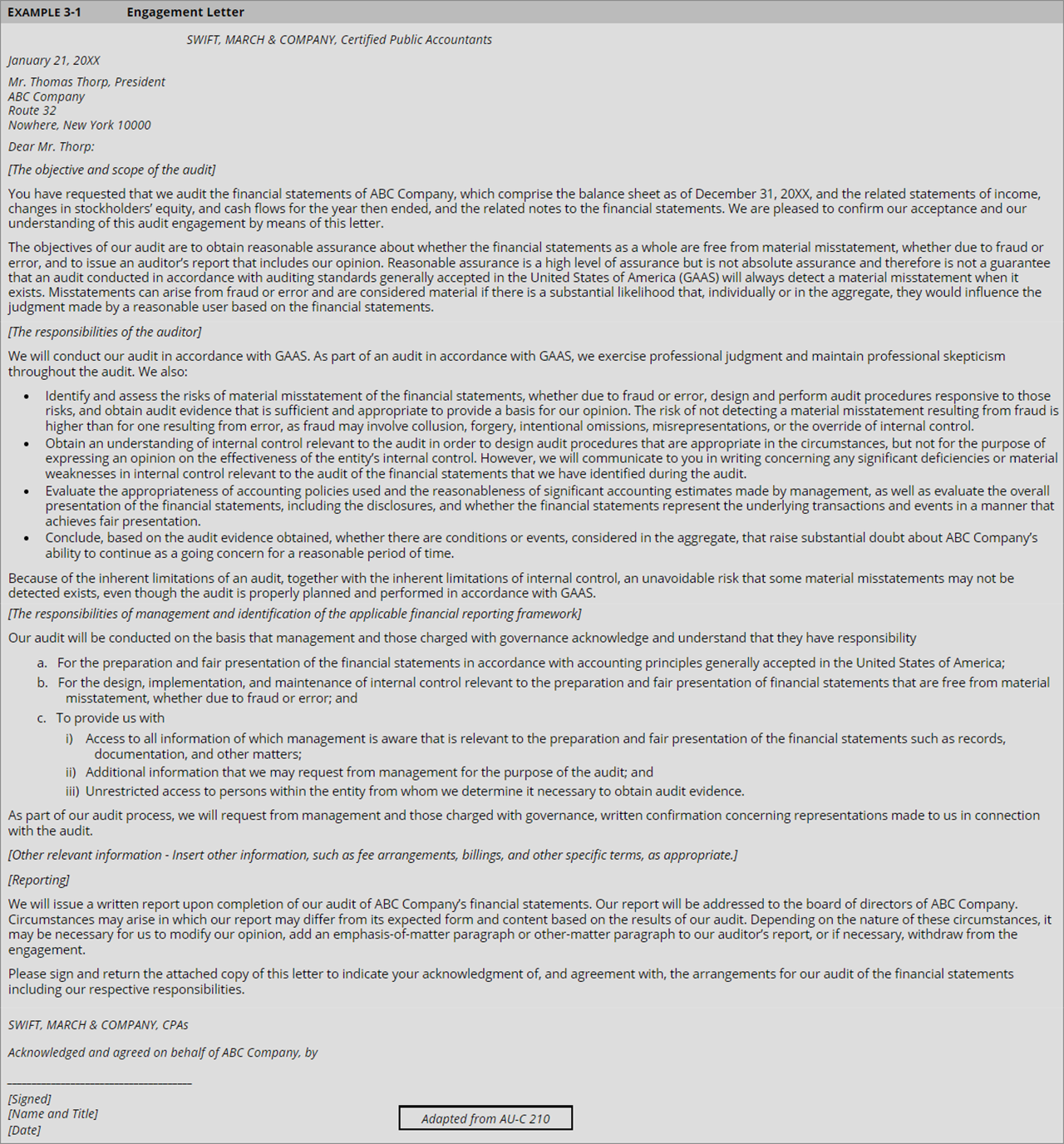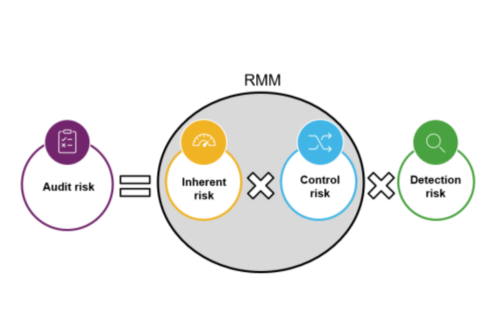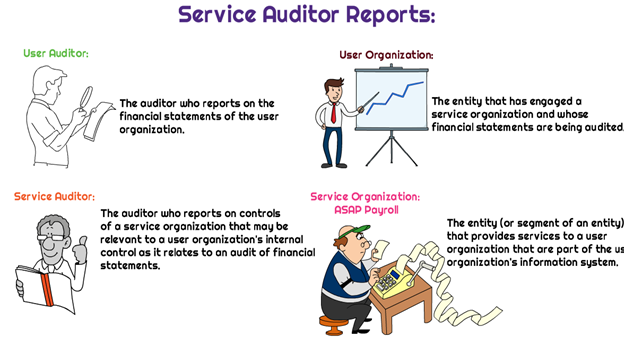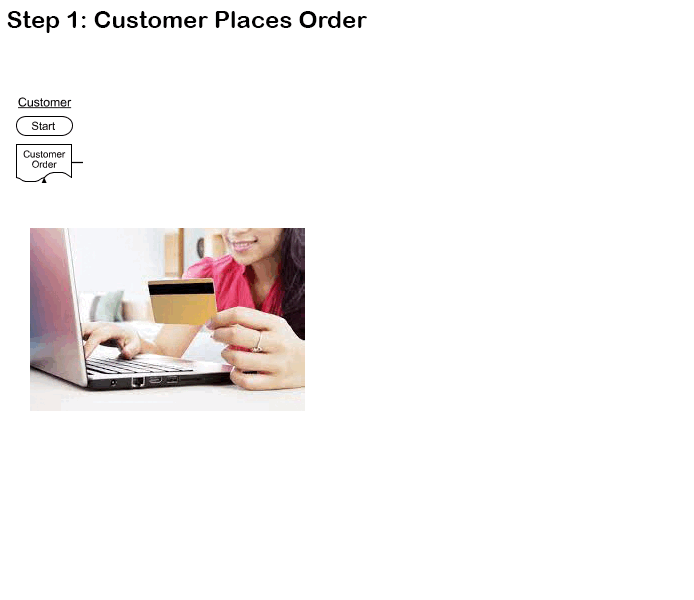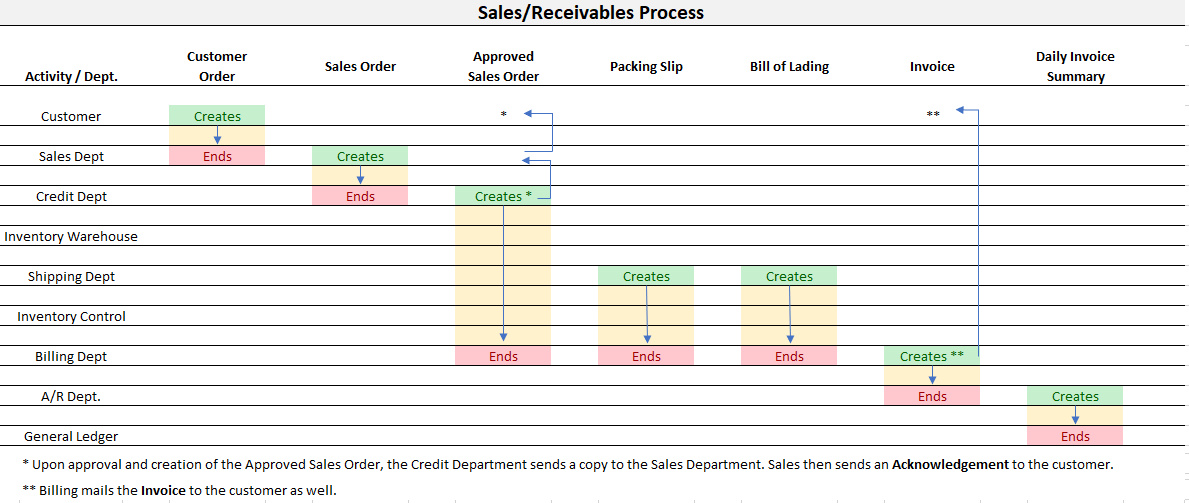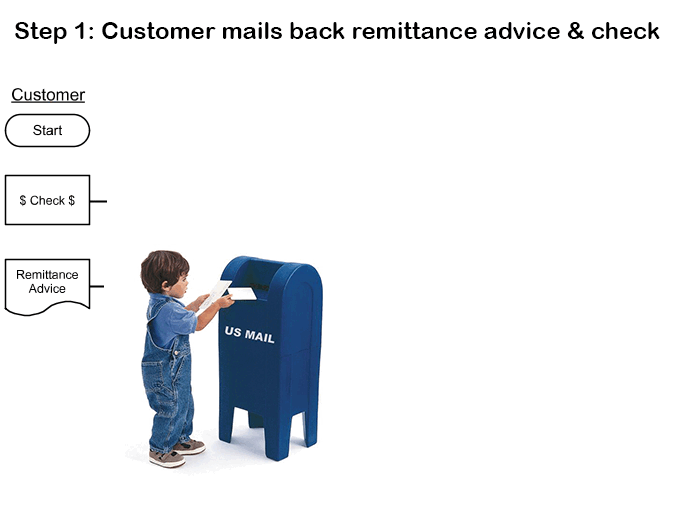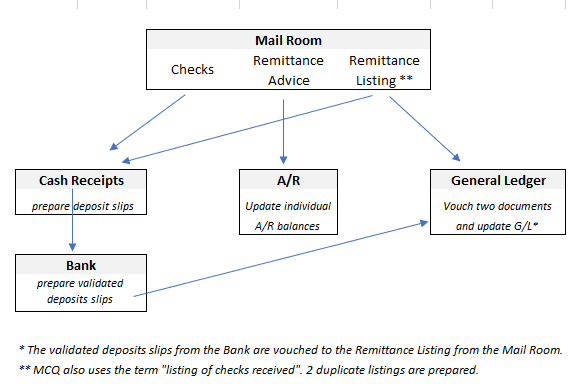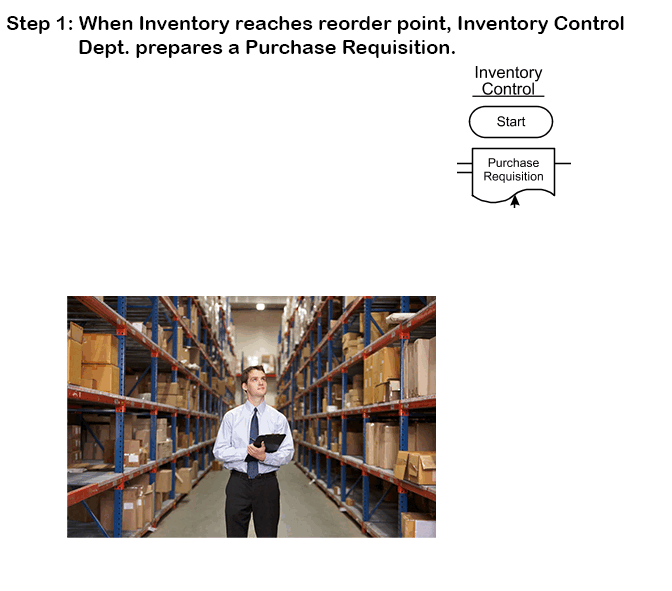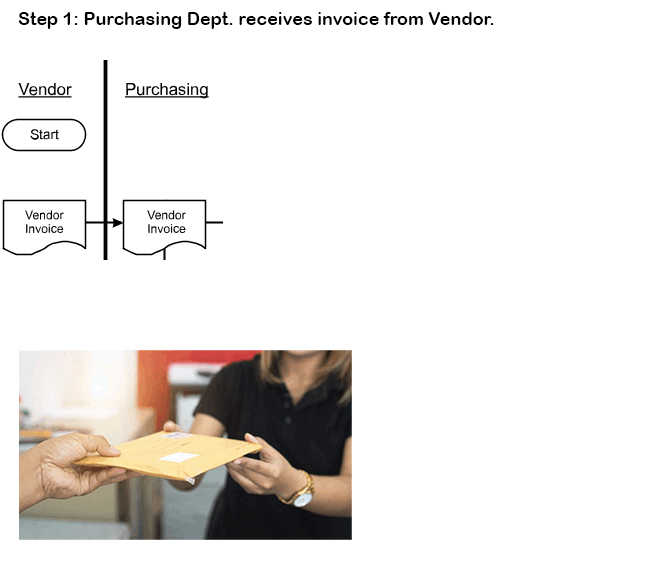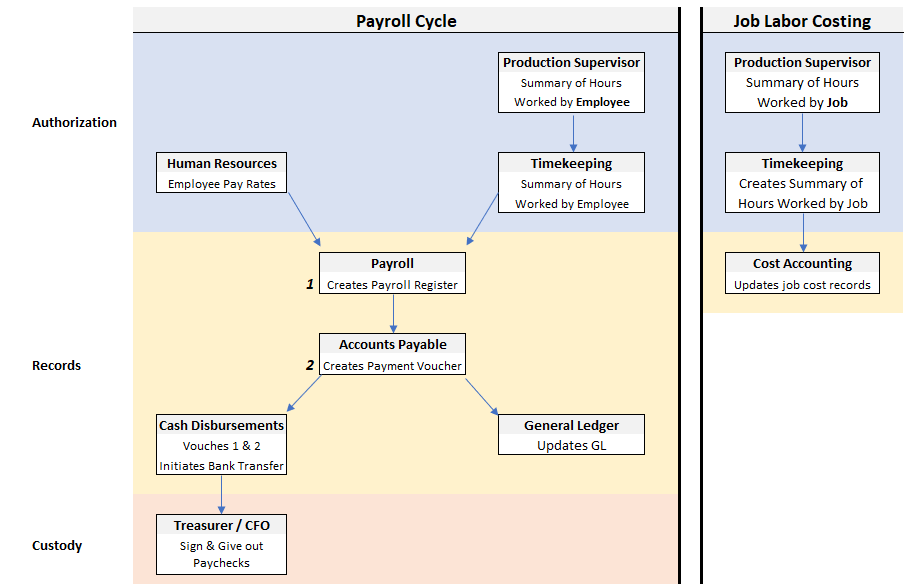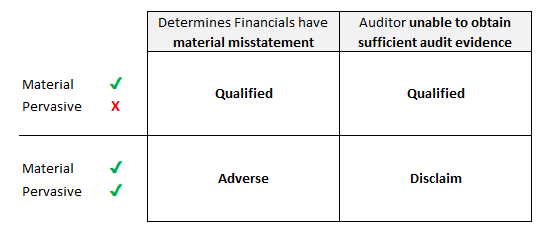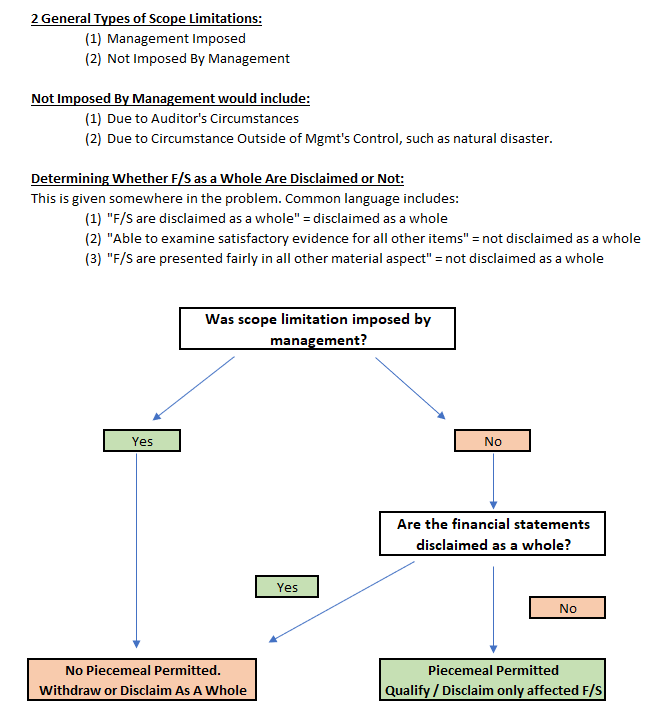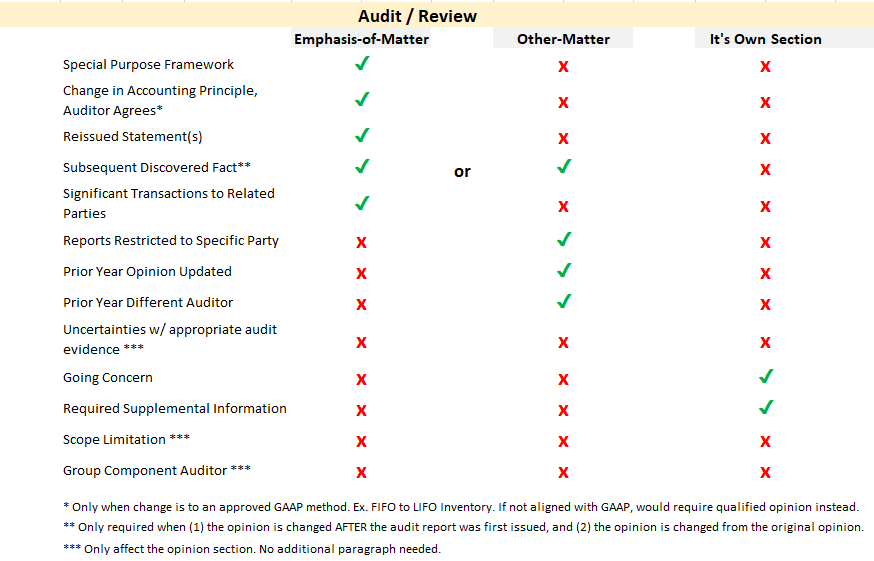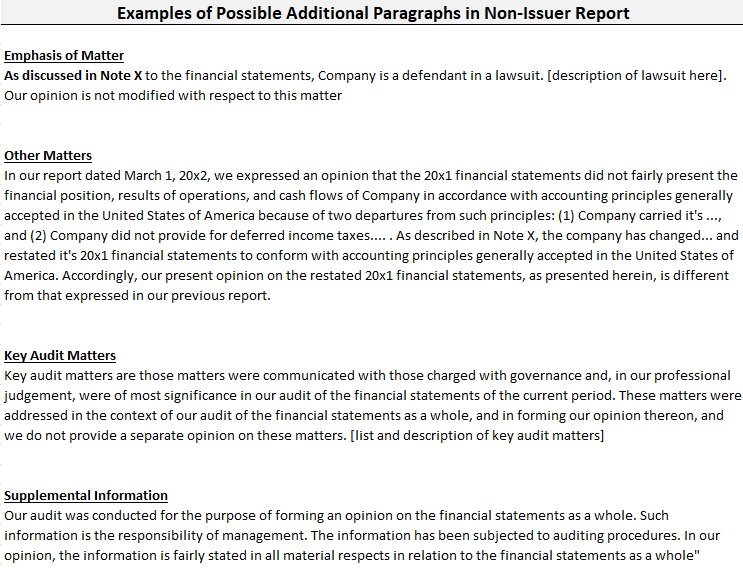Want to sign up and start contributing? Head over to our subreddit at https://www.reddit.com/r/CPAEXAM to get the sign-up code needed.
AUD
Types of Engagements
There are 5 different types of Engagements:
- Preparation
- Compilation
- Review
- Audit
- Agreed-Upon Procedures
| Preparation | Compilation | Review | Audit | Agreed-Upon Procedures | |
|---|---|---|---|---|---|
| Type | Non-Attest | Non-Attest | Attest | Attest | Attest |
| Assurance Provided | Limited Assurance | ||||
| Independence | Not required, but must state lack of independence in compilation report | ||||
| Report Issued? | |||||
| Requires CPA Signature? | |||||
| Notes to Financial Statements Required? |
Who Makes The Rules?
Before we begin, it's important to understand that there are two types of companies:
- Public companies = are open for the public to invest in and trade shares on a stock exchange
- Non-Public companies = are not open to public and shares do not trade on a stock exchange.
Public companies may also be referred to as issuers, and non-public companies may be referred to as non-issuers. Before the enactment of the Sarbanes-Oxley Act of 2002 (SOX), the auditing profession was largely self-regulated, with the American Institute of Certified Public Accountants (AICPA) playing a key role in setting standards for audits. However, in the wake of major corporate scandals in the early 2000s, the Public Company Accounting Oversight Board (PCAOB) was established by congress through SOX and they now set the standards for public companies.
Public Companies (Issuers)
Today, the PCAOB sets the standards for public companies, while the AICPA still sets the standard for the non-public companies. In research, it is unclear what standards are used for engagements of public companies outside of the Auditing Standards (AS), which are used for audits of public companies. For testing purposes, whenever it asks about a public company, PCAOB standards apply.
| Balance Sheet Assertions | |||||||||||||||||||||||||||||||||||||||||||||||||||||||||||||||||||||||||||||||||||||||||||||||||||||||||||||||||||||||||||||||||||||||||||||||||||||||||||||||||||||||||||||||||||||||||||||||||||||||||||||||||||||||||||||||||||||||||||||||||||||||||||||||||||||||||||||||||||||||||||||||||||||||||||||||||||||||||||||||||||||||||||||||||||||||||||||||||||||||||||||||||||||||||||||||||||||||||||||||||||||||||||||||||||||||||||||||||||||||||||||||||||||||||
|---|---|---|---|---|---|---|---|---|---|---|---|---|---|---|---|---|---|---|---|---|---|---|---|---|---|---|---|---|---|---|---|---|---|---|---|---|---|---|---|---|---|---|---|---|---|---|---|---|---|---|---|---|---|---|---|---|---|---|---|---|---|---|---|---|---|---|---|---|---|---|---|---|---|---|---|---|---|---|---|---|---|---|---|---|---|---|---|---|---|---|---|---|---|---|---|---|---|---|---|---|---|---|---|---|---|---|---|---|---|---|---|---|---|---|---|---|---|---|---|---|---|---|---|---|---|---|---|---|---|---|---|---|---|---|---|---|---|---|---|---|---|---|---|---|---|---|---|---|---|---|---|---|---|---|---|---|---|---|---|---|---|---|---|---|---|---|---|---|---|---|---|---|---|---|---|---|---|---|---|---|---|---|---|---|---|---|---|---|---|---|---|---|---|---|---|---|---|---|---|---|---|---|---|---|---|---|---|---|---|---|---|---|---|---|---|---|---|---|---|---|---|---|---|---|---|---|---|---|---|---|---|---|---|---|---|---|---|---|---|---|---|---|---|---|---|---|---|---|---|---|---|---|---|---|---|---|---|---|---|---|---|---|---|---|---|---|---|---|---|---|---|---|---|---|---|---|---|---|---|---|---|---|---|---|---|---|---|---|---|---|---|---|---|---|---|---|---|---|---|---|---|---|---|---|---|---|---|---|---|---|---|---|---|---|---|---|---|---|---|---|---|---|---|---|---|---|---|---|---|---|---|---|---|---|---|---|---|---|---|---|---|---|---|---|---|---|---|---|---|---|---|---|---|---|---|---|---|---|---|---|---|---|---|---|---|---|---|---|---|---|---|---|---|---|---|---|---|---|---|---|---|---|---|---|---|---|---|---|---|---|---|---|---|---|---|---|---|---|---|---|---|---|---|---|---|---|---|---|---|---|---|---|---|---|---|---|---|---|---|---|---|---|---|---|---|---|---|---|---|---|---|---|---|---|---|---|---|---|---|---|---|---|---|---|---|---|---|---|---|---|---|---|---|---|---|---|---|
| Completeness |
Non-Public Companies (Non-issuers)For non-public companies, the AICPA standards apply. The AICPA standards are broadly referred to as Generally Accepted Auditing Standards (GAAS). There are 2 rulemaking bodies within the AICPA that are on the exam.
There are 3 sets of standards that are needed for the test:
Assertions That Management Can MakeManagement makes assertions about the financial statements. It is up to the auditor to test whether those assertions are correct or not. There are 8 Relevant Assertions that management can make. Those are:
Helpful Mnemonics:
EngagementThere's no real step-by-step guide, but here are the general steps of an attestation engagement:
There are certain things that are performed not at any one particular step, but rather are constantly considered and re-visited as needed throughout the attestation engagement. Those are:
Step 1: AcceptanceThe formal acceptance of an engagement is with the signing of an Engagement Letter. This is written by the auditor and signed by the client. The Engagement Letter is signed for all 5 types of engagements. There are 4 sections of the letter:
Below is a chart that has the terminology that could be used on the exam when asking where responsibility lies. Most of these terms are very difficult to understand, and some mean the same thing. These terms are explained in later steps.
Step 2: Planning: Audit Strategy and Audit PlanPlanning the Audit consists of:
Planning is a continual process that begins shortly after the completion of the previous audit and continues until the completion of the current audit engagement. [2] AU-C 300.A11 states that "The audit strategy and audit plan are not necessarily discrete or sequential processes". It also states that they are "interrelated" and that "changes in one may result in consequential changes to the other." [3] The auditor should update and change both the audit strategy and audit plan during the course of the audit as necessary. [4] AICPA standards notes:
Step 3: Risk AssessmentThe overall goal of the audit is to reduce Audit Risk to an acceptably low level. To do this, the auditor must assess the risk of material misstatement (RMM). The test will also refer to this step as "Obtaining the Understanding of the Client" or just "obtaining an understanding". The auditor is assessing two types of risk here:
Audit Risk Model
Since both Inherent Risk and Control Risk are not controlled by the auditor, the auditor must determine the risk level that exists for each. The auditor determines this by performing the following procedures:
Step 4: Performing Further Audit Procedures"Further Audit Procedures" is the term provided by the AICPA, but we can think of it as "performing audit procedures." After we've made our initial assessment about inherent and control risk, we can begin designing and performing the audit procedures. There are two types of Further Audit Procedures:
File:FurtherAuditProcedures.png Test of ControlsIf we determined in the Risk Assessment phase that controls were designed well and are currently functioning at the client, we may rely on those controls to avoid having to perform substantive procedures. To what extent we can rely on the control depends on how effective we judge the control to be at preventing, detecting, and/or correcting a material misstatement.
To test the effectiveness of controls, the auditor will do the following:
The auditor is not required to do all of the above, but must do more than just make inquires. Inquiries alone are not sufficient to determine effectiveness. Substantive ProceduresSubstantive Procedures are performed to detect material misstatements. There are 2 types:
Analytical ProceduresThis is sometimes referred to as "Substantive Analytical Procedures". Analytical Procedures is simply using numbers and ratios to determine whether the balances are in line with expectations or not. The expectation can come from:
Analytical procedures should be performed on high volume, relatively predictable transactions. Test of DetailsDue to the amount of details, this has been given it's own section. Scroll down to find. Test of DetailsTest of Details are procedures performed to obtain evidence regarding the "relevant assertions" provided by management. Relevant assertions is a term that encompasses everything management is asserting and having the auditor review. For example, when the client gives the auditor their financial statements, one assertion that management is making is that the balances are accurate. It is up to the auditor to collect evidence and form an opinion on the accuracy of that assertion. Exactly what tests are done depends on:
Because it would be inefficient to test all 100% of the activity, sampling is typically done. Tests of Detail are then performed on the sample to obtain reasonable assurance.
Sampling and Performing TestsSteps for Sampling: 1. Consider the purpose of the audit procedures [9]
2. Identify the population from which the sample will be taken from
3. Determine acceptable levels of sampling risk
4. Determine sample size 5. Choose the sample selection method. 6. Perform auditing procedures on sample.
7. Evaluate results. 8. Document the work performed and results obtained in the working papers. Risk Types: Sampling Risk vs. Non-Sampling Risk
With sampling risk, the questions will probably focus on the two types of wrong conclusions that can be drawn:
Sampling Approach, Types, and Methods* Key Term(s) are terms that the questions will use to describe each approach. Delegating WorkThe auditor can delegate tasks by using the work of:
When using the work of someone else, the auditor must ensure the following:
* Objectivity is a term generally used when the person is not required to be independent, but is still expected to be impartial. An example would be Internal Auditor's work for the company, but answer to the audit committee instead of company management. Internal AuditorsThe Internal Auditor (IA) can be given some work as long as the external auditor does the following:
The external auditor should make all significant judgements. Tasks that involve assessing, selection, determination, valuation, etc. are not able to be performed by IA. Using Service AuditorsA service auditor is used when a company outsources a business function to another business. An example would be hiring a payroll company to process their payroll. The auditor of the business (a.k.a. User Auditor) will need to receive a report from a Service Auditor attesting to the controls in place at the service organization. This is done through a report from the service auditor titled a SOC Report. There are 3 types of SOC reports:
Any one of those SOC reports can be 1 of 2 "types". The type depends on whether the report attests to the effectiveness of controls or not:
A common question will be "which of these reports attest to the effectiveness of internal controls relating to financial reporting", which would be a SOC 1 Type 2 report. Using Work of SpecialistIf a client has a situation that is rare and complex, the auditor may need to find a specialist who can provide the auditor with evidence that the situation is not materially misstated. Examples include:
The auditor should assess the specialist's objectivity and competence. The auditor should only refer to work of the specialist if issuing a qualified or adverse opinion. Transaction Cycle TestingThe auditor's ultimate goal is to obtain evidence to form an opinion on the relevant assertions made by management. The auditor will do this for all accounts. In the process of business, many of these accounts are involved in the same business function. For example, when a company makes a sale, it not only affects the revenue account, but also the cash account, the accounts receivable account, and the sales return account. These groups of interworking accounts are referred to as "Transaction Cycles". The auditor will seek evidence for the transaction cycles to obtain reasonable assurance over all of the accounts. There are 5 "cycles" covered:
An important aspect of the transaction cycles is proper Segregation of Duties. These 3 activities should be done by different people/departments:
Authorize = They may keep records outside of the financial statement accounts, such as list of employees or summary of hours worked, but they authorize by forwarding their records to the appropriate departments for processing. Beginning of Cycle. Records = Receives documents from the initial sources and updates appropriate journals. Mid-Cycle. Custody = Maintains control over the asset. End of Cycle. Revenue and Sales CycleBelow is a gif walkthrough of the Revenue Cycle: The documents in the cycle are:
Cash Receipts CycleBelow is a walkthrough of the steps in the Cash Receipt Cycle: Here is a more easily readable and memoizable flowchart: Purchases and Inventory Cycle
Cash Disbursements CycleThe Cash Disbursements cycle picks up where the purchasing cycle ended. It begins when the company receives the invoice from the vendor.
Payroll Cycle
Evaluating
DisclaimerScope LimitationsA scope limitation means the auditor was not able to obtain all the information needed.
Auditor's ReportAdd On ParagraphsThere are specific situations that could be tested on. Those are: Report LayoutDue to Wiki's basic formatting options, there's currently no good way to show the various reports on here. See the report tabs at the excel file below for coverage of the report language specifics Government AuditsNothing here. To begin editing, scroll to the top and hit the edit button. Professional ResponsibilitiesThe AICPA Code of Professional Conduct has 3 different sets of standards based on the member's job.
When the client is mentioned, it includes the following people:
Conceptual FrameworkThe code (1.000.010) consists of the rules and interpretations of the rules. While it attempts to address many situations, not all situations can be addressed. For any situation that is not addressed in the code, it instructs to use a "Conceptual Framework". The conceptual framework consists of the following 3 steps:
A situation that may violate the rules is called a "threat". You evaluate whether the risk that the threat violates a rule is within an "acceptable level". This "acceptable level" is subjective, defining it as something a "reasonable and informed third party" would conclude. If you determine that the risk is not within an acceptable level, you lastly analyze whether applying "safeguards" would lower to an acceptable level. If not, you withdraw from the attest engagement. 1. Identify ThreatsThreats are defined in section 1.000.010.06 as relationships or circumstances that could compromise a member's compliance with the rules. There are 7 types of threats:
Threat 1: Adverse InterestWhen the client and member's interest are opposing. Example given is when the two are involved in a lawsuit. Threat 2: AdvocacyWhen the two interests are aligned to the point that his or her objectivity or independence becomes compromised. Some examples include:
Threat 3: FamiliaritySimilar to advocacy except it involves a long or close relationship with the client. Examples include:
Threat 4: Management ParticipationThe threat that a member may take on the role of management for the client. Threat 5: Self-InterestWhen a member has an interest or relationship with the client and stands to gain a benefit from the client. Examples include:
Threat 6: Self-ReviewThreat that the member will not evaluate audit evidence clearly. Examples given involves when you also peform work that is used as audit evidence. Examples are:
Threat 7: Undue InfluenceThreat that the member will not follow his best judgement due to the client's reputation/expertise, aggressive/dominant personality, or other ways.
2. Evaluate Significance of ThreatsThe member should determine whether a threat is at an acceptable level. An acceptable level is defined as when a reasonable and informed third party who is aware of the relevant information would be expected to conclude that the threat would not compromise the member's compliance with the rules. Members should use both qualitative and quantitative factors when evaluating the significance of a threat. 3. SafeguardsSafeguards are defined as actions or other measures that may eliminate a threat or reduce a threat to an acceptable level. There is no strict outline for safeguards. They can be anything done by the client, the firm, or other bodies, that reduce the acceptable level of a threat. IndependenceA member must be both:
Additionally, certain people and/or organizations that could influence a member are also prohibited from certain situation in order for the member to maintain independence. This is called a "covered member".
Covered MemberA covered member is any of the following: [41]
1.240 outlines that a covered member cannot have either of the following in the attest client:
Additionally, 1.240 states that all partners, professional employees, and their immediate family members, cannot in the aggregate own more than 5% of the attest client. When the shares are owned through an investment vehicle such as a partnership, LLC, 529 plan, retirement plan, or other similar type of plan, whether the financial interest is direct or indirect depends on the decision-making ability that the individual has. If they have the ability to control the business making or investment decisions of the plan, then it is a direct financial interest. If they do not have the control ability, then it is an indirect financial interest. If a covered member receives an unexpected financial interest in the client during the audit, such as through a gift or inheritance, then they cannot participate in the audit until they dispose of it, and they have 30 days to dispose of it before impairing their independence. What is the difference between a material indirect vs non-material indirect? ExceptionsThere are certain carved-out exceptions for people who are close to the member, like family. See chart below for classification, and the specific rules below the chart.
Immediate FamilyAn immediate family member may be employed by the attest client as long as they don't hold any of the following:
Close RelativesA close relative can be employed by the attest client as long as they are not in a key position at the attest client. A close relative can have a financial interest in the client as long as the meet all of the following:
Acts Discreditable.400.005.01 says that, with the exception of certain acts that are explicitly stated as "Acts Discreditable", a member should follow the "Conceptual Framework" steps laid out in the member's applicable part (part 1, 2, or 3) in order to determine whether it is an acts discreditable or not. .000.010.01 says that not every relationship and circumstance that a member could face can be explicitly stated in the code of conduct, and therefore a member should follow the "Conceptual Framework" steps laid out in making a determination. .400.005.02 says that a member must be able to demonstrate that safeguards were applied that eliminated or reduced significant threats to an acceptable level, or else a member will be considered to be in violation of the Acts Discreditable Rule. Explicitly stated Acts Discreditable are:
Contingent Fee, Commissions, and Referral FeesA contingent fee is an agreement between two parties where a fee will only be assessed as long as a certain outcome is attained. Attestation WorkThe AICPA Code of Professional Conduct outlines the following situations where a contingent fee or commission is NOT permitted:
Tax WorkFor tax work, basing the fee on the outcome of your work is generally prohibited, with a few exceptions:
All other tax related work is prohibited from charging contingent fees. This includes filing a tax return, filing an amended tax return, or filing a claim for refund (outside of just penalties/interest). [43]
Spousal WorkA member's spouse is NOT prohibited from charging a contingency fee or commission for work the spouse does. However, the work can in no way be associated with the member. The code lays out the following 2 rules:
In summary, your spouse can charge a contingent fee for work that has nothing to do with your practice and where you have no involvement in the work. Investment AdvisoryThe AICPA Code of Professional Conduct does not absolutely say "yes" or "no" when it comes to investment advisory services. Instead, it provides a couple of specific examples where contingency fees are allowed. The document describes these situations as "interpretations". It then states that if a specific interpretation is not listed, the CPA should use the "Conceptual Framework for Members in Public Practice" and be able to demonstrate that safeguards were applied that provided enough assurance that it was allowed. The first specific interpretation allows for the CPA to charge a fee based on the percentage of the overall investment portfolio as long as all of the following are met:
The second specific interpretation allows for the CPA to charge a contingency fee or commission for investment advisory services to both of the following:
Conceptual Framework to Use When No Specific Guidance Is AvailableThe conceptual framework should be used for all rules when it is unclear whether a specific situation is allowed or not. The conceptual framework is a three step process:
A member is not in violation of the rule if the "threat to the compliance of the rule" is at an acceptable level. An acceptable level is defined as "If the member evaluates the threat and concludes that a reasonable and informed third party who is aware of the relevant information would be expected to conclude that the threat does not compromise a member’s compliance with the rules, the threat is at an acceptable level, and the member is not required to evaluate the threat any further under this conceptual framework approach." If it is determined that it is NOT at an acceptable level, then "the member should apply safeguards to eliminate the threat or reduce it to an acceptable level. The member should apply judgment in determining the nature of the safeguards to be applied because the effectiveness of safeguards will vary, depending on the circumstances." If the member does not believe the safeguards have reduced the threat to an acceptable level, then he should decline/discontinue the engagement.[46] Commission and Referral Specific RulesMany of the rules for contingency fees apply to commissions as well. Additionally:
Advertising and Other Forms of SolicitationAdvertising cannot be false, misleading, or deceptive. This is defined as any of the following:
A member with an AICPA designation, such as the Personal Financial Specialist (PFS), can use the letters after their name. However, in order to use it after the companies name, all partners of the firm must have the designation.[48] Client ConfidentialityAble to disclose confidential client information in the following situations:
References |
||||||||||||||||||||||||||||||||||||||||||||||||||||||||||||||||||||||||||||||||||||||||||||||||||||||||||||||||||||||||||||||||||||||||||||||||||||||||||||||||||||||||||||||||||||||||||||||||||||||||||||||||||||||||||||||||||||||||||||||||||||||||||||||||||||||||||||||||||||||||||||||||||||||||||||||||||||||||||||||||||||||||||||||||||||||||||||||||||||||||||||||||||||||||||||||||||||||||||||||||||||||||||||||||||||||||||||||||||||||||||||||||||||||||
- ↑ AU-C 300.02,AICPA Risk Assessment & Response to Assessed Risk, https://us.aicpa.org/content/dam/aicpa/research/standards/auditattest/downloadabledocuments/au-c-00300.pdf#page=1>
- ↑ AU-C 300.A2,AICPA Risk Assessment & Response to Assessed Risk, https://us.aicpa.org/content/dam/aicpa/research/standards/auditattest/downloadabledocuments/au-c-00300.pdf#page=4>
- ↑ AU-C 300.A11,AICPA Risk Assessment & Response to Assessed Risk, https://us.aicpa.org/content/dam/aicpa/research/standards/auditattest/downloadabledocuments/au-c-00300.pdf#page=6>
- ↑ 'AU-C 300.10,AICPA Planning an Audit, https://us.aicpa.org/content/dam/aicpa/research/standards/auditattest/downloadabledocuments/au-c-00300.pdf#page=3>
- ↑ 'AU-C 300.A14,Planning The Audit, https://us.aicpa.org/content/dam/aicpa/research/standards/auditattest/downloadabledocuments/au-c-00300.pdf#page=6>
- ↑ AU-C 300.A11,AICPA Risk Assessment & Response to Assessed Risk, https://us.aicpa.org/content/dam/aicpa/research/standards/auditattest/downloadabledocuments/au-c-00300.pdf#page=6>
- ↑ 7.0 7.1 7.2 7.3 7.4 AU 312.21,AICPA Standards of Field Work, https://us.aicpa.org/content/dam/aicpa/research/standards/auditattest/downloadabledocuments/au-00312.pdf#page=6>
- ↑ 8.0 8.1 8.2 8.3 8.4 AU-C 315.06,AICPA Risk Assessment & Response to Assessed Risks, https://us.aicpa.org/content/dam/aicpa/research/standards/auditattest/downloadabledocuments/au-c-00315.pdf#page=2>
- ↑ AU-C 530.06, AICPA, https://us.aicpa.org/content/dam/aicpa/research/standards/auditattest/downloadabledocuments/au-c-00530.pdf#page=3
- ↑ AU-C 530.A9, AICPA, https://us.aicpa.org/content/dam/aicpa/research/standards/auditattest/downloadabledocuments/au-c-00530.pdf#page=5
- ↑ AU-C 530.A10, AICPA, https://us.aicpa.org/content/dam/aicpa/research/standards/auditattest/downloadabledocuments/au-c-00530.pdf#page=5
- ↑ 12.0 12.1 12.2 12.3 AU-C 530.05, AICPA, https://us.aicpa.org/content/dam/aicpa/research/standards/auditattest/downloadabledocuments/au-c-00530.pdf#page=2.
- ↑ AU-C 530.A4, AICPA, https://us.aicpa.org/content/dam/aicpa/research/standards/auditattest/downloadabledocuments/au-c-00530.pdf#page=4.
- ↑ Modifications to the Opinion in the Independent Auditor’s Report, AICPA, https://us.aicpa.org/content/dam/aicpa/research/standards/auditattest/downloadabledocuments/au-c-00705.pdf#page=3
- ↑ Part 1 Code of Professional Conduct, AICPA, https://us.aicpa.org/content/dam/aicpa/research/standards/codeofconduct/downloadabledocuments/2014-december-15-content-asof-2020-June-20-code-of-conduct.pdf#page=26
- ↑ Code of Professional Conduct 0.300.050.03, AICPA, https://us.aicpa.org/content/dam/aicpa/research/standards/codeofconduct/downloadabledocuments/2014-december-15-content-asof-2020-June-20-code-of-conduct.pdf#page=10
- ↑ Part 2 Code of Professional Conduct, AICPA, https://us.aicpa.org/content/dam/aicpa/research/standards/codeofconduct/downloadabledocuments/2014-december-15-content-asof-2020-June-20-code-of-conduct.pdf#page=151
- ↑ Code of Professional Conduct 0.300.050.03, AICPA, https://us.aicpa.org/content/dam/aicpa/research/standards/codeofconduct/downloadabledocuments/2014-december-15-content-asof-2020-June-20-code-of-conduct.pdf#page=10
- ↑ Part 3 Code of Professional Conduct, AICPA, https://us.aicpa.org/content/dam/aicpa/research/standards/codeofconduct/downloadabledocuments/2014-december-15-content-asof-2020-June-20-code-of-conduct.pdf#page=175
- ↑ Code of Professional Conduct 1.100, AICPA, https://us.aicpa.org/content/dam/aicpa/research/standards/codeofconduct/downloadabledocuments/2014-december-15-content-asof-2020-June-20-code-of-conduct.pdf#page=33
- ↑ Code of Professional Conduct 2.100, AICPA, https://us.aicpa.org/content/dam/aicpa/research/standards/codeofconduct/downloadabledocuments/2014-december-15-content-asof-2020-June-20-code-of-conduct.pdf#page=156
- ↑ Code of Professional Conduct 1.200, AICPA, https://us.aicpa.org/content/dam/aicpa/research/standards/codeofconduct/downloadabledocuments/2014-december-15-content-asof-2020-June-20-code-of-conduct.pdf#page=41
- ↑ Code of Professional Conduct 1.300, AICPA, https://us.aicpa.org/content/dam/aicpa/research/standards/codeofconduct/downloadabledocuments/2014-december-15-content-asof-2020-June-20-code-of-conduct.pdf#page=121
- ↑ Code of Professional Conduct 2.300, AICPA, https://us.aicpa.org/content/dam/aicpa/research/standards/codeofconduct/downloadabledocuments/2014-december-15-content-asof-2020-June-20-code-of-conduct.pdf#page=166
- ↑ Code of Professional Conduct 1.310, AICPA, https://us.aicpa.org/content/dam/aicpa/research/standards/codeofconduct/downloadabledocuments/2014-december-15-content-asof-2020-June-20-code-of-conduct.pdf#page=123
- ↑ Code of Professional Conduct 2.310, AICPA, https://us.aicpa.org/content/dam/aicpa/research/standards/codeofconduct/downloadabledocuments/2014-december-15-content-asof-2020-June-20-code-of-conduct.pdf#page=167
- ↑ Code of Professional Conduct 1.320, AICPA, https://us.aicpa.org/content/dam/aicpa/research/standards/codeofconduct/downloadabledocuments/2014-december-15-content-asof-2020-June-20-code-of-conduct.pdf#page=124
- ↑ Code of Professional Conduct 2.320, AICPA, https://us.aicpa.org/content/dam/aicpa/research/standards/codeofconduct/downloadabledocuments/2014-december-15-content-asof-2020-June-20-code-of-conduct.pdf#page=168
- ↑ Code of Professional Conduct 1.400, AICPA, https://us.aicpa.org/content/dam/aicpa/research/standards/codeofconduct/downloadabledocuments/2014-december-15-content-asof-2020-June-20-code-of-conduct.pdf#page=126
- ↑ Code of Professional Conduct 2.400, AICPA, https://us.aicpa.org/content/dam/aicpa/research/standards/codeofconduct/downloadabledocuments/2014-december-15-content-asof-2020-June-20-code-of-conduct.pdf#page=170
- ↑ Code of Professional Conduct 2.400, AICPA, https://us.aicpa.org/content/dam/aicpa/research/standards/codeofconduct/downloadabledocuments/2014-december-15-content-asof-2020-June-20-code-of-conduct.pdf#page=175
- ↑ Code of Professional Conduct 1.510, AICPA, https://us.aicpa.org/content/dam/aicpa/research/standards/codeofconduct/downloadabledocuments/2014-december-15-content-asof-2020-June-20-code-of-conduct.pdf#page=134
- ↑ Code of Professional Conduct 1.520, AICPA, https://us.aicpa.org/content/dam/aicpa/research/standards/codeofconduct/downloadabledocuments/2014-december-15-content-asof-2020-June-20-code-of-conduct.pdf#page=137
- ↑ Code of Professional Conduct 1.600, AICPA, https://us.aicpa.org/content/dam/aicpa/research/standards/codeofconduct/downloadabledocuments/2014-december-15-content-asof-2020-June-20-code-of-conduct.pdf#page=140
- ↑ Code of Professional Conduct 1.700, AICPA, https://us.aicpa.org/content/dam/aicpa/research/standards/codeofconduct/downloadabledocuments/2014-december-15-content-asof-2020-June-20-code-of-conduct.pdf#page=142
- ↑ 36.0 36.1 Code of Conduct Definitions, AICPA, https://pub.aicpa.org/codeofconduct/ethics.aspx?targetdoc=et-cod&targetptr=et-cod0.400.21
- ↑ Plain English Guide to Independence, AICPA, https://us.aicpa.org/content/dam/aicpa/interestareas/professionalethics/resources/tools/downloadabledocuments/plain-english-guide.pdf#page=29
- ↑ Code of Conduct Definitions, AICPA, https://pub.aicpa.org/codeofconduct/ethics.aspx?targetdoc=et-cod&targetptr=et-cod0.400.22
- ↑ 39.0 39.1 Code of Conduct Definitions, AICPA, https://pub.aicpa.org/codeofconduct/ethics.aspx?targetdoc=et-cod&targetptr=et-cod0.400.19
- ↑ Code of Conduct Definitions, AICPA, https://pub.aicpa.org/codeofconduct/ethics.aspx?targetdoc=et-cod&targetptr=et-cod0.400.27
- ↑ Plain English Guide to Independence, AICPA, https://us.aicpa.org/content/dam/aicpa/interestareas/professionalethics/resources/tools/downloadabledocuments/plain-english-guide.pdf#page=18
- ↑ 42.0 42.1 AICPA Code of Conduct 1.510.010.04,AICPA, https://us.aicpa.org/content/dam/aicpa/research/standards/codeofconduct/downloadabledocuments/2014-december-15-content-asof-2020-June-20-code-of-conduct.pdf#page=136>
- ↑ Contingent Fee Tax Advice: IRS Allows Some, Not All,Forbes, https://www.forbes.com/sites/robertwood/2017/05/10/contingent-fee-tax-advice-irs-allows-some-not-all/?sh=14766ee39d71>
- ↑ AICPA Code of Conduct 1.510.040,AICPA, https://us.aicpa.org/content/dam/aicpa/research/standards/codeofconduct/downloadabledocuments/2014-december-15-content-asof-2020-June-20-code-of-conduct.pdf#page=136>
- ↑ AICPA Code of Conduct 1.510.050,AICPA, https://us.aicpa.org/content/dam/aicpa/research/standards/codeofconduct/downloadabledocuments/2014-december-15-content-asof-2020-June-20-code-of-conduct.pdf#page=137>
- ↑ AICPA Code of Conduct 1.000.010,AICPA, https://us.aicpa.org/content/dam/aicpa/research/standards/codeofconduct/downloadabledocuments/2014-december-15-content-asof-2020-June-20-code-of-conduct.pdf#page=26>
- ↑ AICPA Code of Conduct 1.520.040,AICPA, https://us.aicpa.org/content/dam/aicpa/research/standards/codeofconduct/downloadabledocuments/2014-december-15-content-asof-2020-June-20-code-of-conduct.pdf#page=139>
- ↑ AICPA Code of Conduct 1.600.030,AICPA, https://us.aicpa.org/content/dam/aicpa/research/standards/codeofconduct/downloadabledocuments/2014-december-15-content-asof-2020-June-20-code-of-conduct.pdf#page=141>
